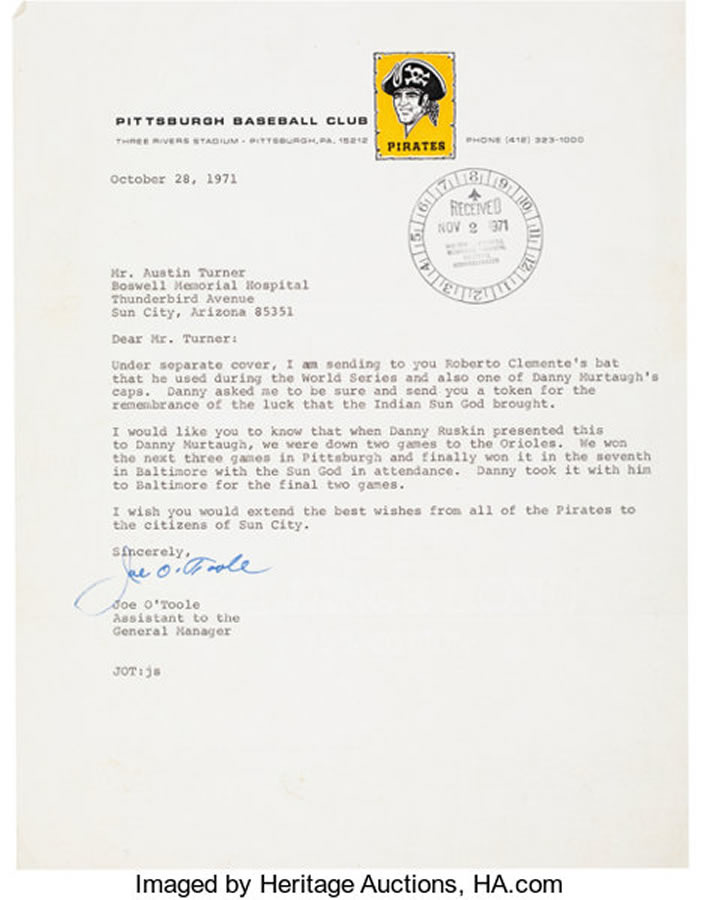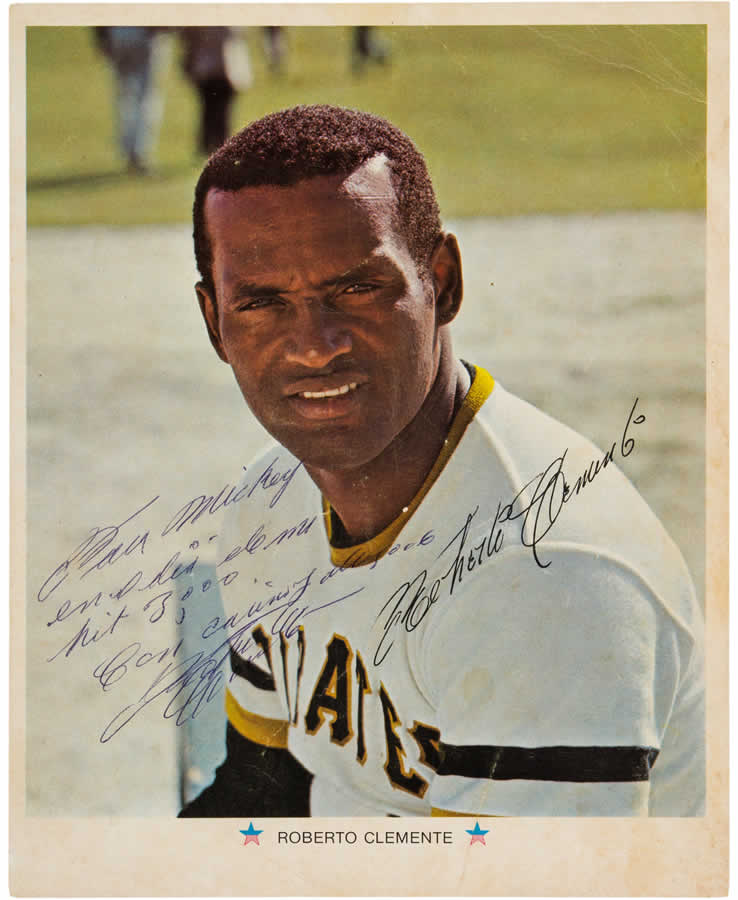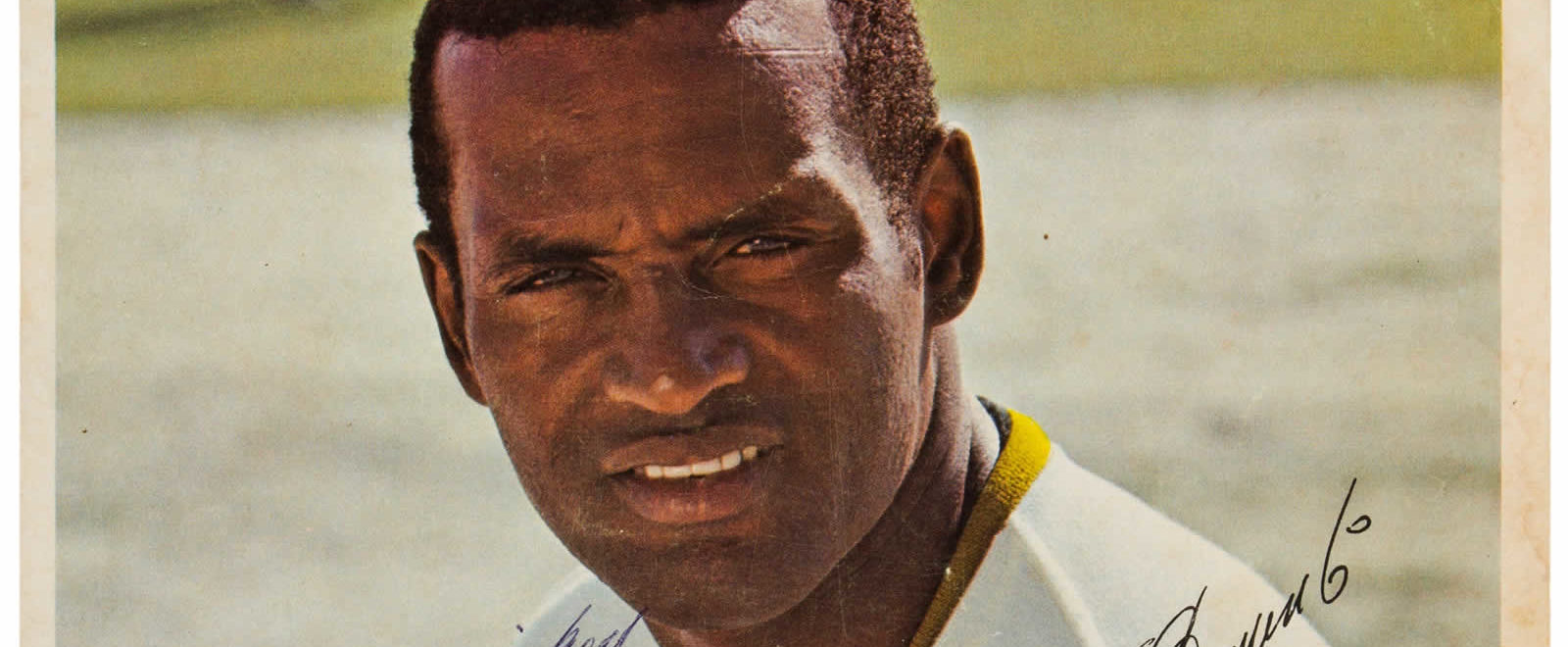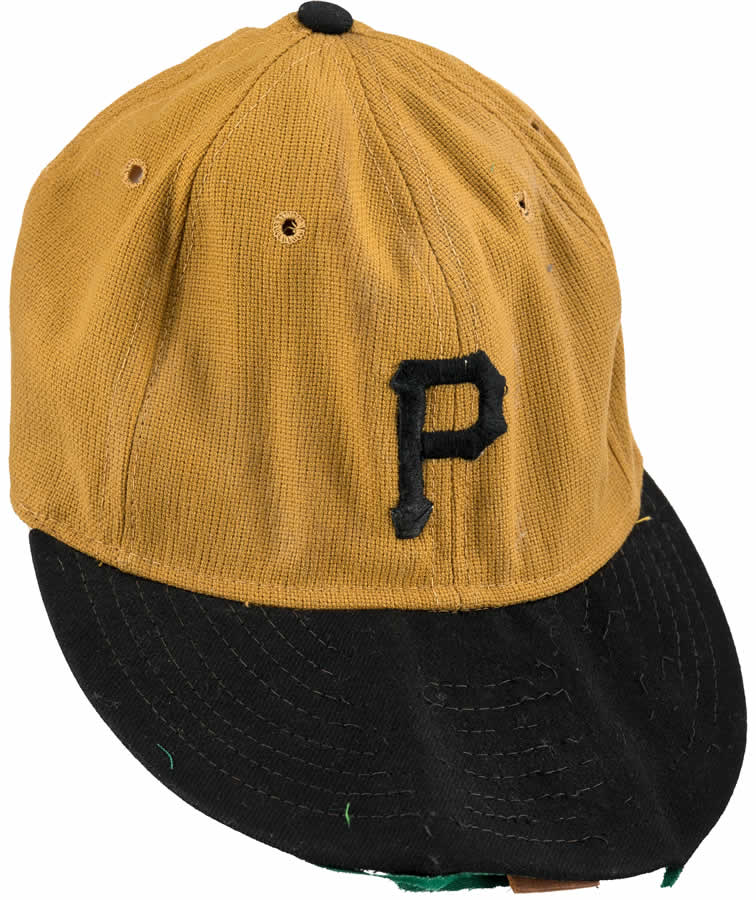LEGENDARY HALL OF FAMER USED HILLERICH & BRADSBY (AND A LUCKY KACHINA DOLL) TO WIN 1971 WORLD SERIES
By David Seideman
The situation looked bleak for the hometown Pittsburgh Pirates on Oct. 12, 1971.
EVENT
SUMMER SPORTS PLATINUM AUCTION 50016
Aug. 17-18, 2019
Online: HA.com/50016a
INQUIRIES
Jason Simmons
214.409.1652
JasonS@HA.com
They were down two games to none in the World Series, facing the reigning champions, the Baltimore Orioles. Baltimore was a formidable foe. The Orioles were one of two teams ever to have four 20-gamer winners in a season and fielded some of history’s best sluggers and slickest fielders.
The Orioles had everything in their favor, except the support of Austin Turner, the administrator of a community hospital in Sun City, Ariz. One of his employees received permission for a leave of absence to attend the series in Pittsburgh.
Turner gave her one of his prized 14-inch Kachina dolls from his vast collection as sort of a lucky rabbit’s foot. Turner – described by his daughter, Scottie Marable, as a true “Renaissance man” – obtained the Kachina Sun God doll, carved from cottonwood root, on one of his frequent trips to a Hopi reservation. The dolls represent Hopi spirits or deities, often tied to natural elements such as the sun.
Enlarge

It just so happened that the employee, a dietitian named Esther Ruskin, was the brother of Joe O’Toole, the assistant to the Pirates’ general manager. Ruskin’s 13-year-old son, Danny, took the Kachina to O’Toole and asked him to give it to the Pirates’ manager, Danny Murtaugh. “And when the opening game began in Pittsburgh, the Sun God sat unblinking in the Pirate dug out,” a Sun City newspaper reported at the time.
The Pirates proceeded to reel off three straight victories at home. Baseball players are famously superstitious, so Murtaugh naturally took the doll with him on the road to Baltimore, where the Pirates clinched the championship in seven games. They were led by the all-time great Roberto Clemente. The Puerto Rico native became the first Spanish-speaking ballplayer to win a World Series MVP.
He showed off his rifle arm from right field and hit safely in every game. All told, he was 12 for 29 for an eye-popping .414 batting average, and he hit two home runs. The esteemed baseball writer Roger Angell wrote that Clemente, a star since his rookie year in 1955, was “at last the recipient of the kind of national attention he always deserved but was rarely given for his years of brilliant play.”
Two weeks after the Pirates popped champagne corks, Turner received a letter in the mail from O’Toole informing him that he was being shipped a Clemente bat from the World Series and one of Danny Murtaugh’s caps. “Danny asked me to be sure and send you a token,” O’Toole wrote, “for the remembrance of the luck that the Indian Sun God brought.”
Heritage is offering Clemente’s magic wand in its Summer Sports Platinum Auction scheduled for Aug. 17-18, 2019. The pre-sale estimate is at least $40,000. The cap’s estimate is $3,000-plus. Both items are consigned by Turner’s daughter.
“Collectors covet any Clemente bat they can find,” says Jason Simmons, a consignment director for the sports department who handled the bat. “The story and the documentation that come with this bat are extraordinary. It involves a kid, a good luck charm, and the bat of the World Series MVP who is a folk hero, and it is all documented in the Pirates’ letter and the newspaper article. We expect collectors will bid aggressively for this unparalleled Clemente bat.”
Last fall, Marable and her two brothers finished dividing the estate of her father, who passed in 2016 at the age of 89, and she acquired the bat. For the past, 48 years, it has remained a secret to the hobby and even to the Turner family itself. “[My father] referred it to his ‘special bat,’” she explains. “I never saw it.”
Marable, 66, thinks her dad may have kept it hidden in a closet or somewhere else in the house while pursuing his other passions. Her dad collected Hopi and Navajo baskets and jewelry, was a silversmith, raised Siamese seal point show cats, and owned two turquoise mines.
Like Clemente himself, Turner’s bat is special, indeed. The handle end has a distinctive flair, with Clemente’s number 21 written on it. The weight, 36.6 ounces, is exceptionally large. “Compared to contemporary stars like Hank Aaron and Willie Mays, Clemente gamers look like caveman clubs,” writes Joe Orlando, co-author of Legendary Lumber: The Top 100 Player Bats in Baseball History and president of PSA/DNA, which authenticated the bat and gave it its highest game-used grade, a 10.
On top of that, there is scoring on the barrel. “Clemente would carve light grooves into the barrel in order to create spin on the ball after contact,” adds Orlando. “It is important to note that the vast majority of his bats do not possess this type of modification.”
Enlarge

Clemente collectibles are especially valuable because of his greatness and the Jackie Robinsonesque aura he maintains. The Hall of Famer won 12 consecutive Gold Gloves, eclipsed the 200-hit mark five times on the way to 3,000 career hits, and finished his career with a .317 batting average. Meanwhile, he mentored teammates and served as a role model to children.
Like Robinson, his humanitarian streak has earned him extra immortality. On New Year’s Eve, 1972, Clemente died in a plane crash trying to deliver supplies to Nicaragua after it was hit by a massive earthquake. He was 38.
For her part, Marable says she’ll be thrilled with her windfall, but harbors no grand plans other than to put it in her savings account. What animates her most is the renewed attention her bat will give to a true American hero.
“I know that there are schools and parks in Puerto Rico everywhere named after him,” she says. “I would have loved to know him. Not only was he extremely talented, he was a wonderful person. He’s the kind of person we need, probably in more ways than we know.”
This article appears in the Fall 2019 edition of The Intelligent Collector magazine. Click here to subscribe to the print edition.



